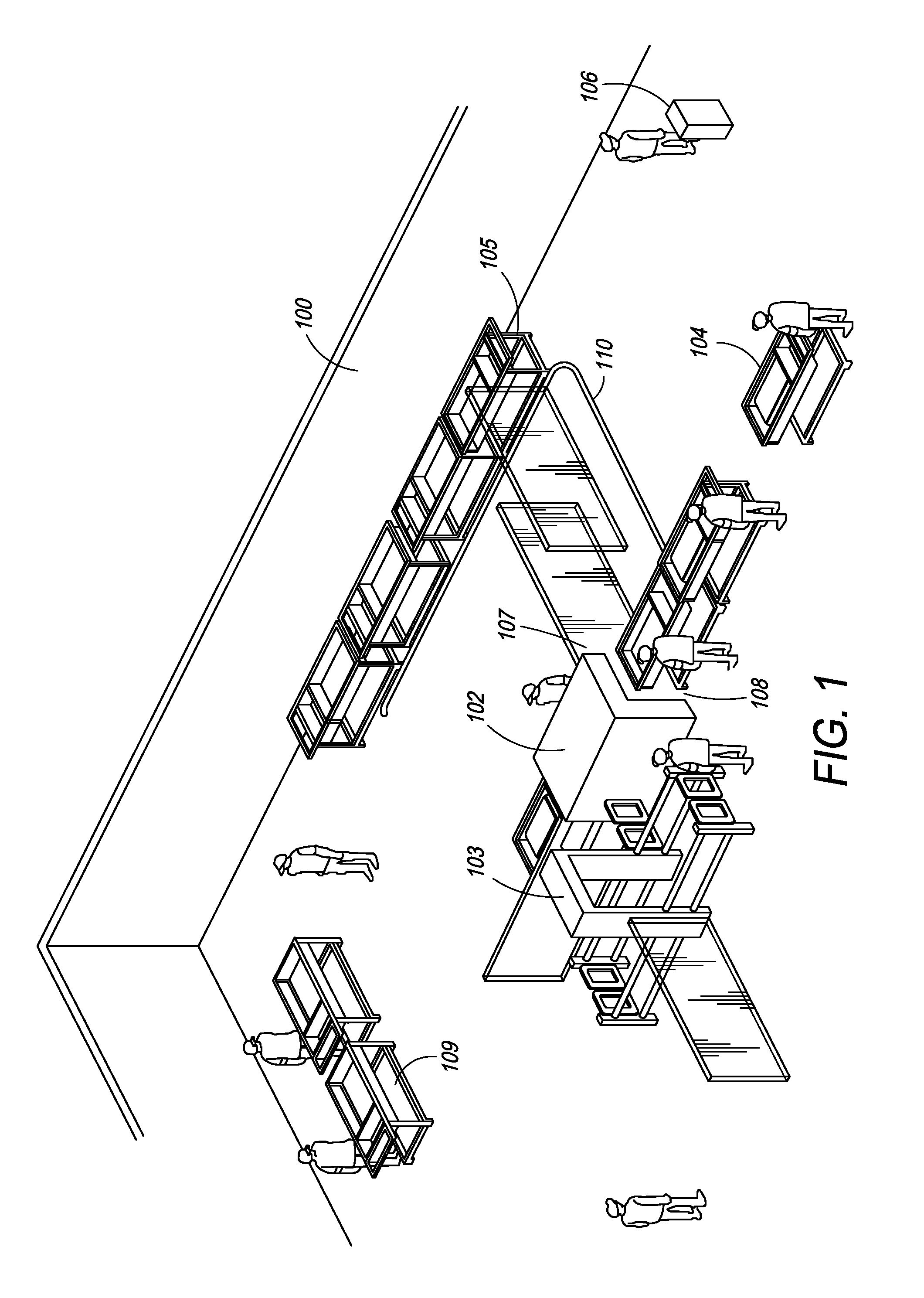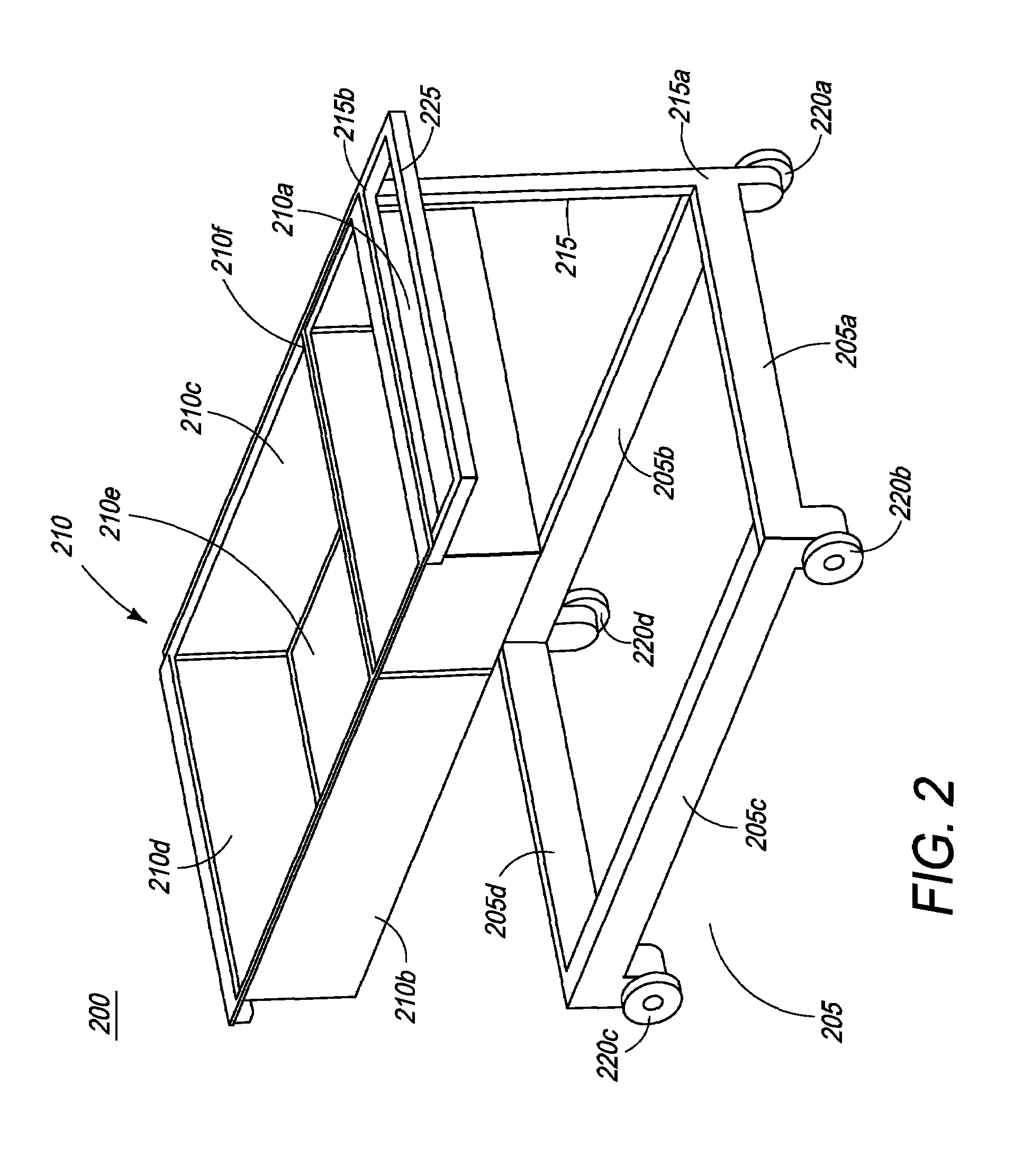Integrated carry-on baggage cart and passenger screening station
a carry-on baggage and passenger technology, applied in the field of integrated carry-on baggage carts and passenger screening stations, can solve the problems of inefficiency of conventional prior art security baggage and passenger screening systems described above, individuals' considerable amount of time to divest themselves of their belongings and remove laptops, etc., and achieve the effect of efficient scanning
- Summary
- Abstract
- Description
- Claims
- Application Information
AI Technical Summary
Benefits of technology
Problems solved by technology
Method used
Image
Examples
second embodiment
[0107]In another embodiment of the integrated carry-on baggage cart and passenger screening station, facilitating screening of both carry-on luggage placed on the screening cart and individual passengers, a computed tomography (CT) scanner is employed. Thus, the corresponding carry-on baggage cart is designed to facilitate screening via non-“C” shaped scanners, such as, but not limited to CT scanners. In addition, the corresponding carry-on baggage cart is X-ray transmissive to allow for the CT scanner system to scan completely around the cart. While the second embodiment is described with respect to an integrated carry-on baggage cart and passenger screening station in which a CT scanner is employed, it is to be understood by those of ordinary skill in the art that this invention is not limited to such uses, but that any scanning device or mechanism may be used.
[0108]CT scanners are being increasingly deployed for securing locations such as airports, as they more accurately recogni...
first embodiment
[0120]In an alternate embodiment, the entrance of the CT scanning system may be designed such that the inlet to the scanning chamber is at floor level. In this embodiment, a guide-rail mechanism may be used to pull the cart into the scanner entrance, as previously described with respect to the present invention.
[0121]Preferably, the carry-on baggage cart is designed to allow for the carts to be stacked or inserted into one another when not in use. This provides for easy and space-saving storage of carts.
[0122]As previously mentioned, the process of CT scanning involves a complete circumferential (360°) rotation by the illuminating source and detectors about the object under inspection. In order to allow irradiation and imaging from all angles, the carry-on baggage cart is designed to be completely X-ray transmissive. Preferably, the entire cart, including legs, wheels, and handle is manufactured using a suitable X-ray transmissive material or combination thereof. Such X-ray transmis...
PUM
| Property | Measurement | Unit |
|---|---|---|
| computed tomography | aaaaa | aaaaa |
| CT | aaaaa | aaaaa |
| concentrations | aaaaa | aaaaa |
Abstract
Description
Claims
Application Information
 Login to View More
Login to View More - R&D
- Intellectual Property
- Life Sciences
- Materials
- Tech Scout
- Unparalleled Data Quality
- Higher Quality Content
- 60% Fewer Hallucinations
Browse by: Latest US Patents, China's latest patents, Technical Efficacy Thesaurus, Application Domain, Technology Topic, Popular Technical Reports.
© 2025 PatSnap. All rights reserved.Legal|Privacy policy|Modern Slavery Act Transparency Statement|Sitemap|About US| Contact US: help@patsnap.com



